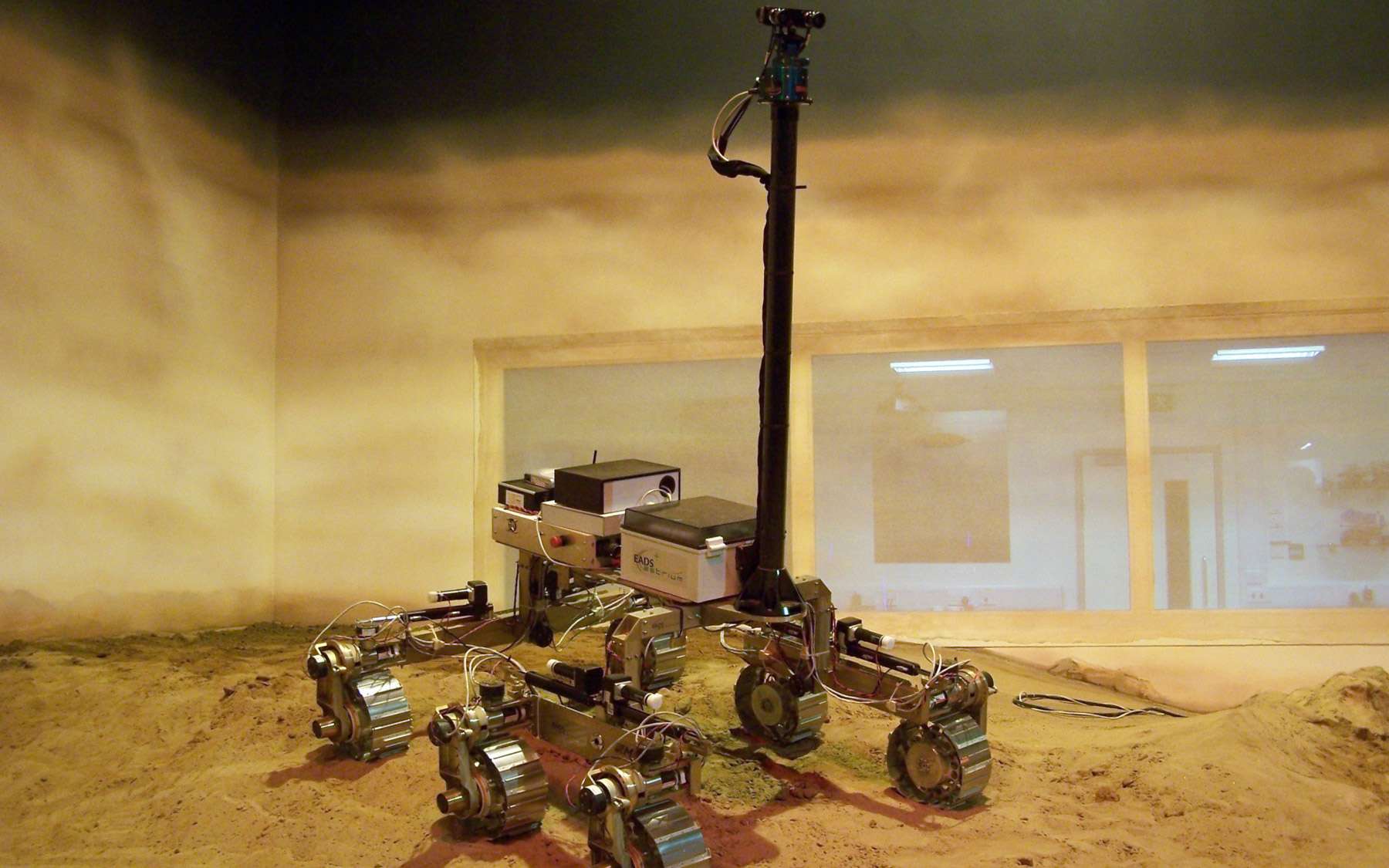
Atom in the Spotlight: World News Headlines
back to contentsUK Generates Electricity from Americium
As reported by World Nuclear News (WNN), the UK’s National Nuclear Laboratory (NNL) and University of Leicester converted the heat generated from americium into electricity. The scientists lit up a small light bulb within a specially shielded area of NNL’s laboratory in Cumbria, England, using heat from a small amount of americium. This tiny light is an important step towards the use of americium in radioisotope generators, which will open the way for deep space missions.
Radioisotope thermoelectric generators (RITEGs) are power batteries for space probes. Such generators use the heat produced by radioactive fuel pellets to power spacecraft on deep space missions or struggling against challenging environments on planet surfaces where other power sources such as solar panels stop functioning. With such sources of power, space probes will be able to send data and images back to the Earth for many decades.
Some existing probes use an isotope of plutonium instead, but that is in increasingly short supply. Americium is a synthetic chemical element which does not occur naturally but is a by-product of plutonium decay. Plutonium in its turn is produced in nuclear reactors and then placed into storage with other radioactive wastes. “It is great to think that americium can be used in this way, recycling something that is a waste from one industry into a significant asset in another,” Tim Tinsley from the National Nuclear Laboratory (NNL) told David Nield from ScienceAlert in his interview.
“The americium in plutonium is potentially a problem for re-using the plutonium as new fuel. In extracting the americium from aged plutonium stocks, we end up with both the separated americium and also ‘cleaner’ plutonium – for potential re-use in the fuel cycle. So it’s a win-win,” NNL’s researcher Adrian Bull said.
Space agencies hope to eventually make progress with high density energy sources on a series of tasks that seemed impossible a while back. “This successful collaboration between the nuclear and space sectors has created a brand-new capability for Europe, and opens the door to a future of ambitious and exciting exploration of our solar system,” ESA Program Lead Keith Stephenson said.
 Rosatom’s Russian Research Institute of Experimental Physics also conducts experiments in this field. Russian-designed RITEGs and high-energy generators use strontium-90 and plutonium-238 as radioactive isotope fuel, respectively. Last November, Rosatom supplied a set of radioisotope heater units to China for its moon exploration mission.
Rosatom’s Russian Research Institute of Experimental Physics also conducts experiments in this field. Russian-designed RITEGs and high-energy generators use strontium-90 and plutonium-238 as radioactive isotope fuel, respectively. Last November, Rosatom supplied a set of radioisotope heater units to China for its moon exploration mission.
New Investment in Fusion
Many experts believe nuclear fusion to be an ultimate solution to the energy problem. Fusion reactors simulate reactions inside the Sun where light nuclei merging to form heavier ones releasing huge amounts of energy. On the Sun, the process is triggered by gravity. On the Earth, scientists are trying to recreate the fusion conditions with temperatures of approximately 150 million degrees. Holding plasma, which is required to fuse nuclei, is still a challenge.
Scientists have struggled since the 1930s to develop a power generation process of the future and produce spacecraft fuel using fusion.
Construction of the International Thermonuclear Experimental Reactor (ITER) began in 2010 in France. Initial estimates of its cost and completion time were changing constantly, varying from EUR 5 billion and 2016 to EUR 5 billion and 2025. It is possible that delays and political debates between the project’s stakeholders will move the first trial to a later date. Not everyone agrees to wait that long.
Thermonuclear fusion attracts entrepreneurs and investors ready to finance long-term projects. “They [science-minded entrepreneurs and investors] see small companies as more nimble than government-funded behemoths. They are sensitive to rising alarms over the impact of climate change. They want to create a power source with enviable possibilities: millions of times the energy potential of oil and gas and substantially more than nuclear power, without the carbon emissions of fossil fuels,” Stanley Reed writes in his article for The New York Times. He talks about First Light Fusion, a British company challenging energy orthodoxy. Its founders, an Oxford University professor Yiannis Ventikos and his post-graduate student Nick Hawker, see fusion as a solution to the problem of the changing climate. At the project’s start, Nick Hawker raised about USD 30 million to use a solution that differs from the ITER technology.
As a rule, fusion experiments involve extreme heating of a boiling soup of atoms known as plasma. This requires lots of energy and materials able to withstand temperatures of more than 100 million degrees. Mr. Hawker takes a different approach. He fires disc-shaped bullets the size of a dime at speeds of nearly 50,000 miles an hour at a bead of hydrogen isotopes encased in clear plastic – a fuel pellet. Upon collision, the pellet gets compressed and creates the conditions for hydrogen atoms to fuse and form helium.
First Light Fusion is a member of the Fusion Industry Association which consists of 17 private companies commercializing fusion. Among them are Tokamak Energy also located near Oxford and Commonwealth Fusion Systems founded by scientists from the Massachusetts Institute of Technology. In the article for MIT Technology Review, Leigh Phillips writes about General Fusion from Canada and California-based TAE Technologies that spent 20 years and USD 500 million to develop a fusion reactor expected to join the market in 5 years. Start-ups are not the only players on the fusion market.
Chris Mowry, CEO of General Fusion, tried to explain to MIT Technology Review why investors are interested in fusion. Leigh Phillips quotes his words, “Fusion reactors might be harder to build, he suggests, but they are more socially acceptable. This is why there’s been a rush of venture capital into fusion, he says—investors are confident there will be a sea of eager buyers waiting for whoever can make it work first.”
Meanwhile, the greens in Europe want the ITER to be closed and, as many supporters of the anti-nuclear campaign, do not see the difference between nuclear fission and fusion. “Experts might be lining up behind nuclear, but convincing skeptical voters is something else,” writes Leigh Phillips.
Russia with its unparalleled expertise in nuclear and thermonuclear research is one of the first participants of the ITER project and makes 9% of all project investments. Rosatom Group companies produce key reactor components and other hi-tech equipment for the ITER. “ITER is important for us as a ground where we can test energy solutions of the future and as an opportunity to strengthen Russia’s role on the global technology market,” Rosatom’s Director General Alexey Likhachev said.




